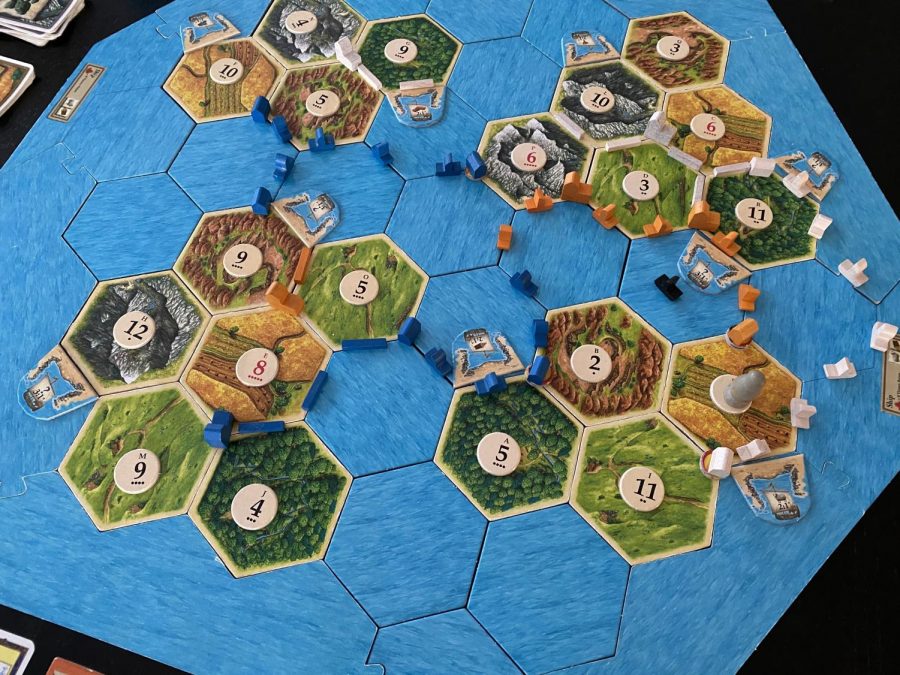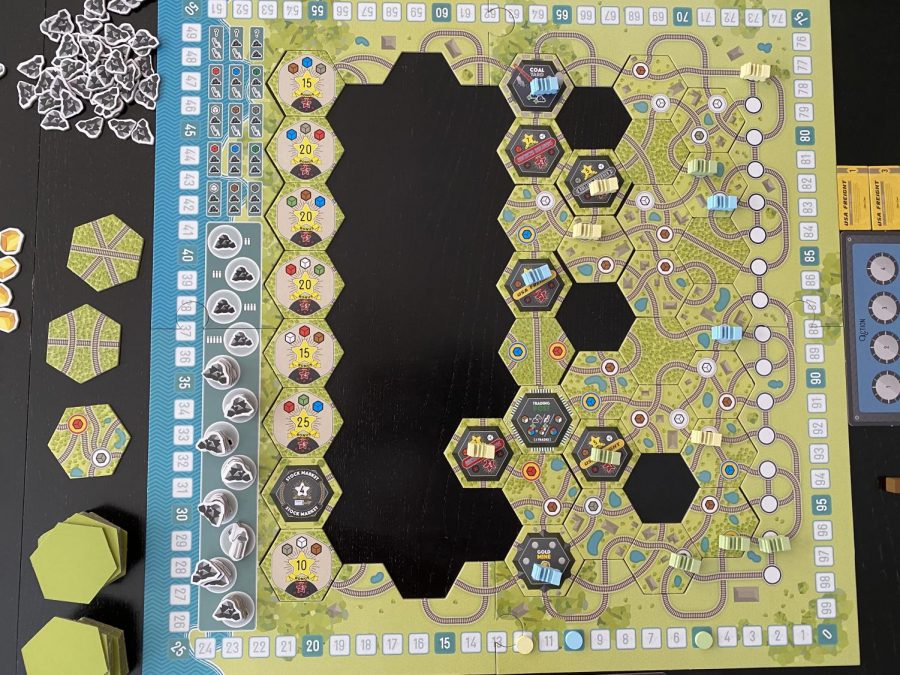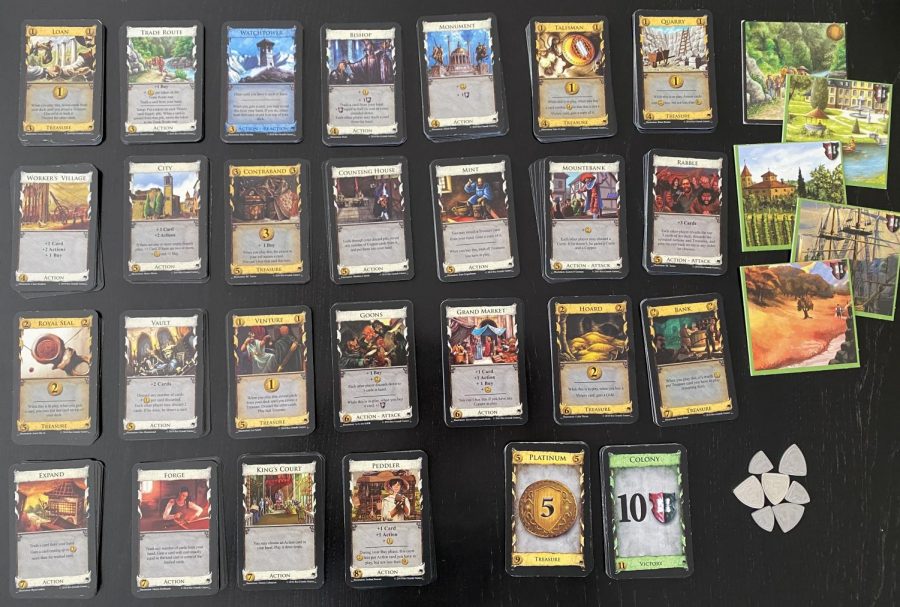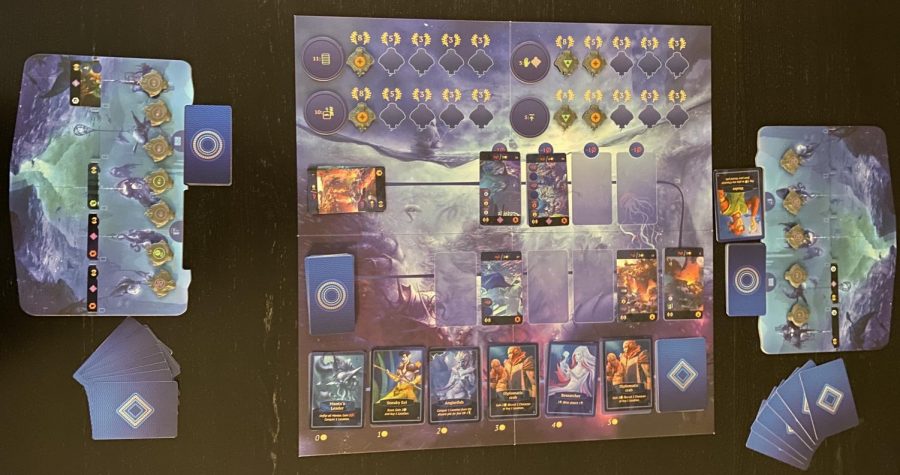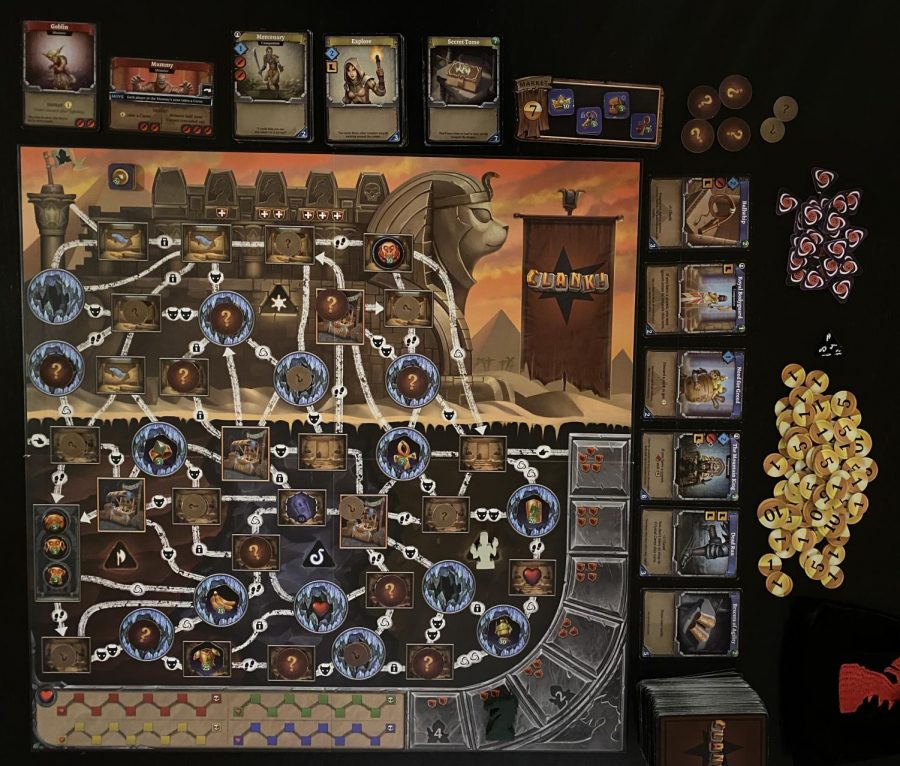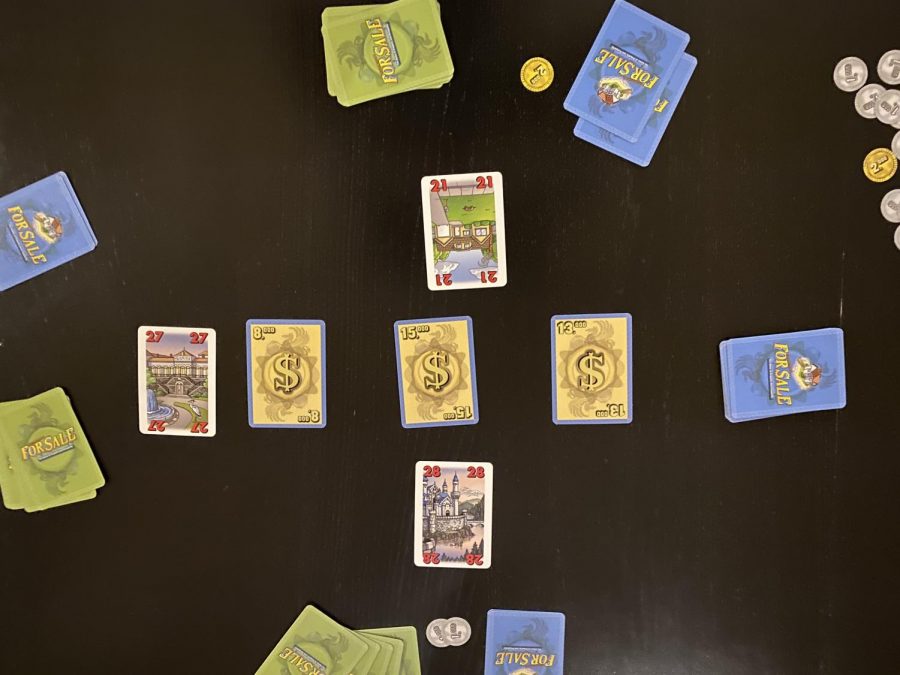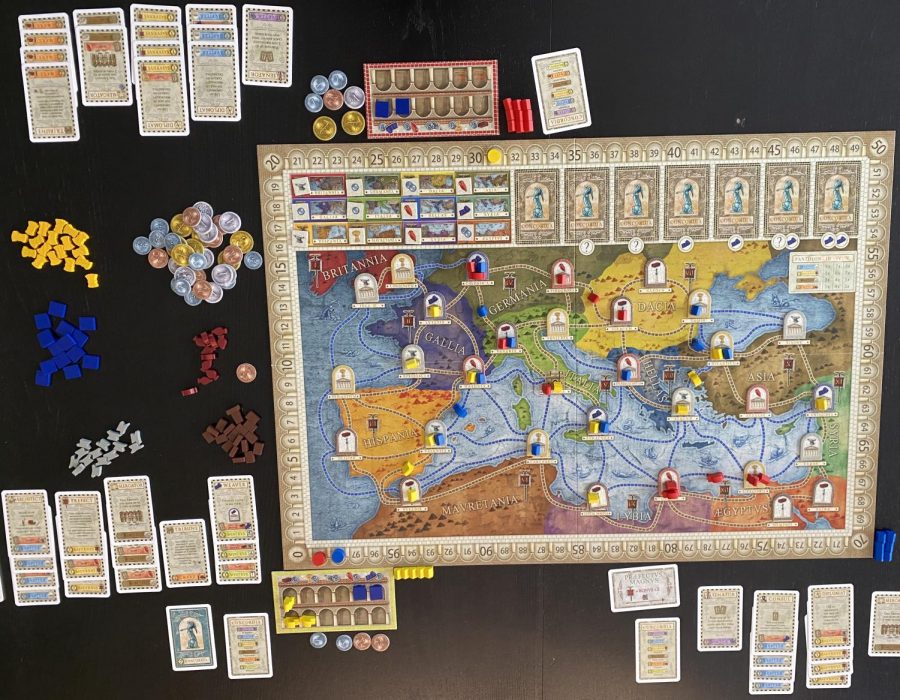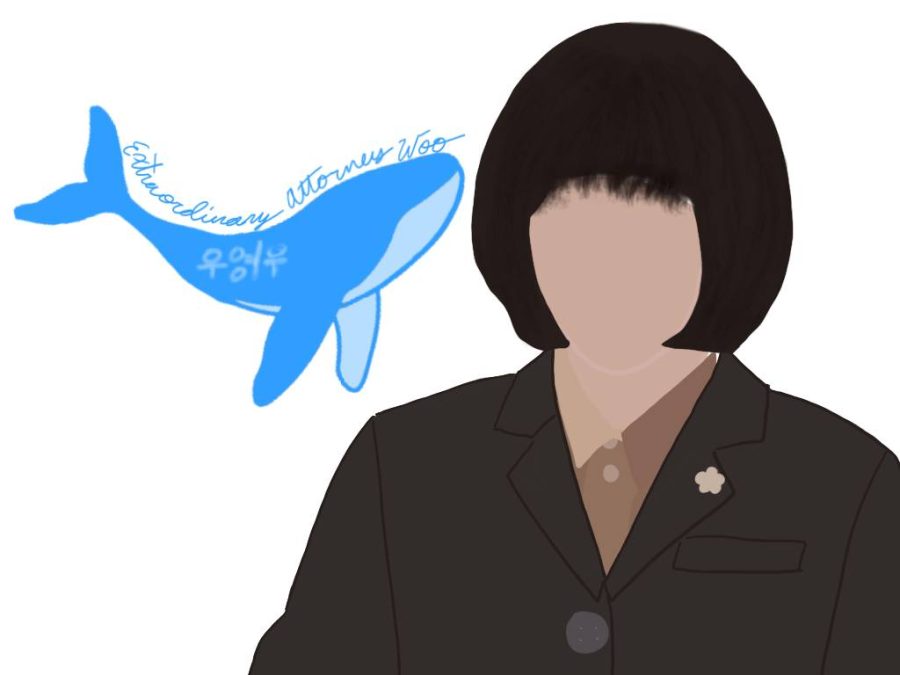Catan is one of the most popular board games of all time. In my review of Catan, I mentioned that Catan is a great gateway game for someone looking for player interaction and negotiation but has some problems hinging off lucky dice rolls. In this review, it’s time to expand from the island of Catan across the seas as we take a look at Catan: Seafarers. This expansion makes the Catan board bigger and includes some water hexes. Players will build their ships around them to reach islands. The game has nine scenarios in the rulebook that have unique rules and variable setups. Let’s find out if this is something Catan fans need to get and whether this will change the mind of someone who has Catan and doesn’t like it much.

How to Play
One of the new things that this expansion has is some new terrain hexes. There are some more hexes for the five resources and deserts to work with the larger maps, but there are also gold fields and water hexes. The gold fields play just like other resource terrain hexes, but when a settlement or city on a gold field produces, the player can choose to take any resources of their choice. In most scenarios, the gold fields are on far-away islands that players can work towards during the game.
The game also has new board frames that combine with the ones from the base game to make a larger board. In the larger board, the scenarios will have you put water hexes in some places to create separate islands. A larger board also means that players will need to achieve more victory points to win, so games will be longer.
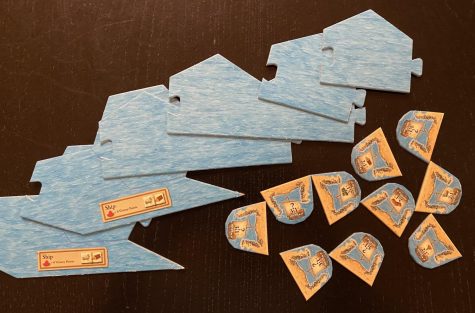
Ships cost players one lumber and one wool to build. Ships have to connect to a player’s network and can only be built along edges with one or two water hexes. It’s important to note that players are not really building individual ships, but instead establishing a shipping route with them. Unless the player is building off their settlement or city, players cannot build ships off a road network or roads off a shipping network. However, the longest road card now applies to ships too, so it is more of a Longest Trade Route.
One ability of ships that isn’t available with roads is that players can move a ship once per turn. If a player has a ship that is only connected to one of their other pieces, such as just one other ship, they can move that ship to connect to one of their pieces somewhere else on the board.
However, a new opportunity comes with a new peril with the introduction of the pirate. When a player rolls a “7” or plays a knight card, they have the option to move the pirate ship instead of the robber. The pirate ship moves to sea hexes. The active player then steals a resource from another player who has a ship around that sea hex. The pirate stops players from building or moving ships around the sea hex it moves to.
The last things included in this expansion are Catan Chits. These are little tokens used to mark things, such as victory points, that can be earned in some scenarios.
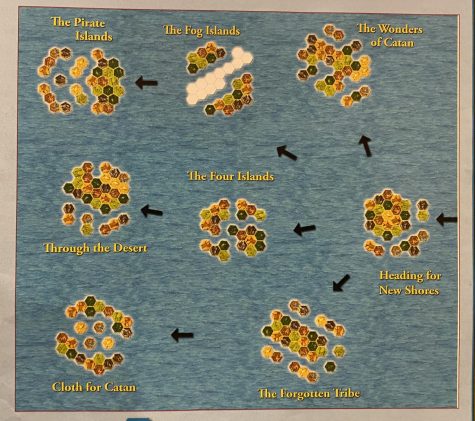
Final Thoughts
That’s how you play Catan: Seafarers. If you know how to play Catan, you’ll have no problem learning these rules, although some of the rules about roads and ships touching are a little unclear. Other than that, the rulebook does a good job, mostly because it features the nine scenarios. These scenarios do a good job scaling difficulty. The first scenario is the island of Catan from the base game plus a few smaller islands off the coast. Just as easy is the second scenario, where there are just four small islands for players to play on. Later on, there are more complicated scenarios where players are building shipping routes to collect cloth, battle pirates, or buy goods from another tribe. The designer did a good job creating all these scenarios; they are the best part of the expansion. Another positive is that while everyone will have their favorites and least favorites among the scenarios, players can also design their own scenarios with the game’s components.
Mechanically, the ships are quite interesting. They cost one lumber and one wool, making the useless wool resource from Catan more valuable and giving players another strategy. Thematically, it makes sense that players can alter a shipping route but cannot move a road, but that also makes things more interesting; players can escape with ships if they get cut off on water, but there is nothing players can do if they get blocked on land.
The thing that bugs me a little bit is that there is now a second villain to move around the board. The robber was already bad enough, and the pirate isn’t nearly as powerful. Because of this, the pirate usually ends up sitting somewhere blocking one player while others are more concerned about moving the robber. The player hindered by the pirate has to roll another “7” to move the pirate and continue building their ships.
The last new thing was the gold fields. They are a lot of fun to play with. Players always want to go after the gold fields, and they’re worth building next to even if their number token is unfavorable because of the flexibility they give.
Catan: Seafarers is not going to change your opinion of the game. If you love Catan, then you have to try this expansion. If you didn’t like Catan’s fundamental mechanisms, you aren’t going to like playing with the Seafarers expansion any better. I only play Catan every once in a while, but I prefer playing with an expansion when I do. The Seafarers expansion is a great choice since it has various scenarios and so much replayability. Catan did well because it was a simple game with interesting negotiations, player interaction, and a different board every game. Catan: Seafarers continues to do all that and makes the game experience more enjoyable; if you like playing Catan for those reasons, then this expansion is essential for you to get. The expansion’s final rating based on how essential it is will be an 8.5 out of 10.
[star rating=”4.25″]

